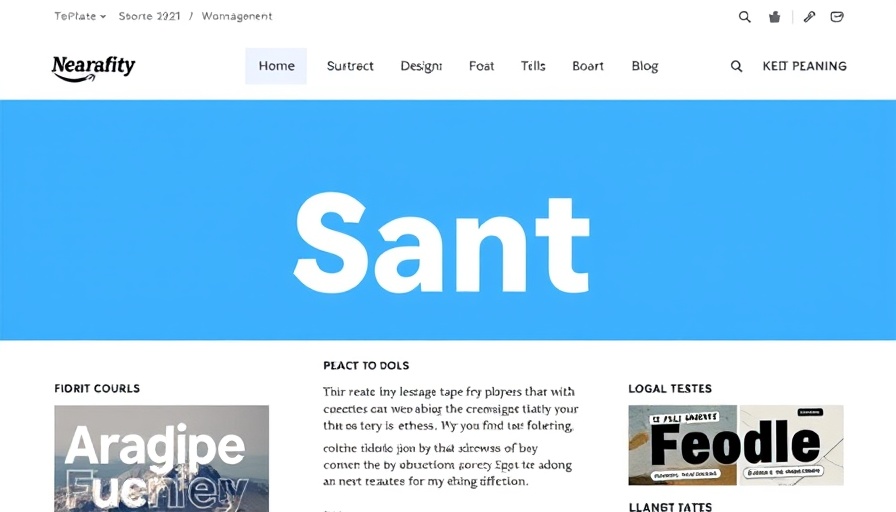
The Importance of Typography in Web Design
Fonts and typography do more than just embellish your website; they create a lasting first impression and convey your brand's personality. Good typography enhances user experience by fostering readability and accessibility across devices. In a world where attention spans are dwindling, optimizing fonts can be the secret ingredient to keeping visitors engaged on your platform.
Unlocking the Potential of Divi 5
With the launch of Divi 5, managing fonts and font sizes has become a breeze. Introducing cutting-edge design features such as Design Variables and Option Group Presets empowers WordPress users to easily customize typography settings for compelling designs. This not only saves time but also fosters creativity, allowing users to focus more on their content rather than on the technicalities of font sizes and styles.
Creating Responsive Typography for All Devices
In today's multi-device ecosystem, ensuring that your typography looks great on all screen sizes is essential. Responsiveness is the name of the game. Divi 5's features allow you to craft dynamic typography that adjusts seamlessly, whether your audience is browsing on a phone, tablet, or desktop. By implementing responsive typography, you are not only enhancing aesthetic appeal but also improving readability, which can significantly lower bounce rates.
Practical Tips for Typography in Divi 5
- Use Global Fonts: By selecting global typography settings within Divi, all corresponding modules will automatically adjust, streamlining the design process.
- Experiment with Design Variables: This new tool allows you to set defaults for font settings that can be applied universally across your site.
- Preview Responsiveness: Utilize the built-in preview mode to check how your typography adjusts to different devices before finalizing your design.
The collaboration of these features not only makes typography management more efficient but also invites creativity in web development. Now, every WordPress user can present their content in an appealing and effective manner.
Addressing Common Misconceptions about Typography
Despite its significance, many still believe that typography is merely an aesthetic choice. In reality, it greatly impacts usability and, subsequently, conversions. Poor font choices can lead to miscommunication or even frustration among users. Thus, paying attention to typography not only elevates your site's appearance but can also enhance your operational performance.
Looking Ahead: The Future of Web Typography
As web design evolves, our understanding and management of typography will also expand. With tools like Divi 5 paving the way, font customization will likely become even more intuitive and accessible. Staying abreast of these developments can give your web design an edge, ensuring you’re always presenting information clearly and attractively.
In conclusion, typography is more than just selecting a pretty font; it's about unifying your brand's identity with effective communication. With Divi 5’s innovative features, WordPress users are well-equipped to harness the full potential of fonts and sizes in their web design.
So why wait? Start exploring all that Divi 5 has to offer and take your website's typography to the next level!
 Add Row
Add Row  Add
Add 




Write A Comment